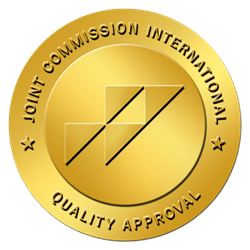Programs of Recovery
Programs of recovery provide a community and support system for people battling addiction or for those close to them. These programs help keep you accountable in recovery and offer peer support and resources to help you navigate situations that challenge your sobriety.
Two of the most well-known programs of recovery are Alcoholics Anonymous (AA) and Narcotics Anonymous (NA). These 12-step programs were created to provide a guide for people with substance use disorders (SUDs) that would help them recover from substance abuse and maintain sobriety.
12-Step Programs for Loved Ones
Dealing with a SUD is never easy for the individual with the addiction. It can also be extremely difficult for those closest to them. Addiction hijacks your brain’s reward system, causing you to think and behave in uncharacteristic ways. Oftentimes, when people have lost control of their lives and behaviors to drugs and alcohol, they aren’t concerned with who they hurt along the way. Al-Anon and Nar-Anon are two recovery support groups designed for family and friends of people with substance addictions. They help identify some of the behaviors and situations that arise when you’re dealing with an individual in active addiction or in recovery, and provide support and resources.
Alternatives to the 12 Steps
If you’re looking to attend a recovery program or support group but don’t relate to some of the non-secular concepts behind the 12 Steps, alternative options are available. SMART Recovery, “Self-Management and Recovery Training,” is a community of recovery support groups that adopt a secular approach to addiction recovery. SMART serves to create a safe space for people seeking recovery while fostering self-discovery throughout the program. Other common alternatives to the 12 Steps include Refuge Recovery, Secular Organizations for Sobriety (S.O.S), and LifeRing.
Surrounding yourself with individuals that are on a similar recovery journey as you is important for long-term recovery. The community you have around you matters—make sure it’s a community that is going to support and further your growth.
What Are the 12 Steps of AA and NA?
Step 1: Honesty
“We admitted we were powerless over alcohol and that our lives had become unmanageable.”
Your recovery journey begins with admitting to yourself and others that you have a substance problem. It can be challenging to hold yourself accountable, which is why 12-step groups emphasize the connection with a counselor or AA/NA sponsor for additional support.
Step 2: Faith
“Came to believe that a Power greater than ourselves could restore us to sanity.”
This step encourages you to find something outside of yourself that will give you the support and inspiration to help maintain sobriety. If you’re not religious, other AA or NA members can offer new ideas and perspectives that may work better for you.
Step 3: Surrender
“Made a decision to turn our will and our lives over to the care of a Higher Power as we understood it.”
Step 3 invites you to recognize patterns of self-destructive decisions and let go of the need for control. Surrendering to a Higher Power can be difficult and often terrifying to accept—but knowing that you cannot accomplish what you need to on your own, often helps people come to terms with it.
Step 4: Soul Searching
“Made a searching and fearless moral inventory of ourselves.”
Soul-searching and self-reflection are essential if you desire growth and change in your recovery process and life. It encourages you to identify and deal with areas you’ve ignored for far too long. Growth can’t happen if you choose to stay the same.
Step 5: Integrity
“Admitted to a Higher Power, to ourselves, and to another human being the exact nature of our wrongs.”
Confessing to yourself and a Higher Power that you acknowledge the nature of your self-destructive decisions opens you up to new opportunities for improvement. Putting your feelings out on the table frees you from the weight you’ve been holding onto.
Step 6: Acceptance
“Were entirely ready to have a Higher Power remove all these defects of character.”
Altering your belief system and accepting that sobriety was the right decision for you will help shift your mindset to be more positive. Accept your faults, and your past mistakes, and move forward with the hope and motive of being better.
Step 7: Humility
“Humbly asked a Higher Power to remove our shortcomings.”
With acceptance comes humility and transparency—acknowledge how far you have come and be proud of it, but don’t allow that pride to kick you back to where you started. Oftentimes, people believe they’ve achieved sobriety once they’ve reached a certain goal and they choose to stop attending 12-step meetings—this does not always work out in their favor. Recovery is a lifelong journey. Achieving a certain level of sobriety does not exempt you from requiring assistance or support. Whether you’re in recovery or not, surrounding yourself with a healthy community is always a key factor in excelling in life.
Step 8: Willingness
“Made a list of all persons we had harmed and became willing to make amends to them all.”
Improvement and change cannot occur if you are unwilling to make the modifications necessary for your recovery. Humility plays a key role in willingness because people often require modesty to demonstrate the desire to change and make amends with their past.
Step 9: Forgiveness
“Made direct amends to such people wherever possible, except when to do so would injure them or others.”
Forgiveness is one of the most freeing steps in recovery. Forgiveness isn’t just about forgiving those that have done you wrong, but it is also forgiving yourself for allowing it to happen. Resentment is a restraint on growth and can even put you back in the cycle of substance use. Free yourself of that weight and choose to forgive and heal.
Step 10: Maintenance
“Continued to take personal inventory and when we were wrong promptly admitted it.”
Recovery is a choice you make every single day in order to maintain your progress. It is choosing what’s best for your mental and physical health despite the ongoing cravings and negative thoughts. Allow your progress to be motivation and inspiration to not turn back and continue moving forward in recovery.
Step 11: Making Contact
“Sought through prayer and meditation to improve our conscious contact with God as we understood Him, praying only for knowledge of His will for us and the power to carry that out.”
Step 11 encourages you to make contact with a Higher Power through stillness, meditation, prayer, and/or reflection. If you’re not a religious person, aside from prayer these are all activities you can partake in. Allow yourself to find a quiet place to be still and tune into your thoughts.
Step 12: Service
“Having had a spiritual awakening as the result of these steps, we tried to carry this message to alcoholics and practice these principles in all our affairs.”
The twelfth and final step encourages you to share experiences and the message of hope with others. This is an opportunity to take all of the work you’ve done and the progress you’ve made and share it with other people in need of that transformation in their own lives.
What is the 12-Step Program of Recovery?
The most well-known 12-step programs of recovery are Alcoholics Anonymous (AA) and Narcotics Anonymous (NA). The purpose of these mutual aid organizations is to spread awareness and support for people looking to recover from substance addiction. AA and NA are accessible to anyone that is struggling with substance abuse. These peer support groups are especially beneficial when you feel alone in your battle with a SUD. Twelve-step groups surround you with people that are on a similar journey as you and understand and relate to the feelings and cravings you’re experiencing.
How Does it Work?
In the 12-step model, the program is typically designed to progress in order of steps from one to twelve, however, many people find themselves revisiting and repeating some steps as they navigate through their recovery—and that’s okay.
The 12-step program holds group meetings for people in recovery that discuss the mental, emotional, and physical effects of addiction. The program stems from a spiritual, Christian-based approach, however, you are not required to be religious or spiritual to attend. Every group includes a sponsor—someone in long-term recovery—that leads the members of the group, acting as a mentor.
There are open meetings and closed meetings to choose from. Open meetings are accessible to alcoholics and nonalcoholics that are looking to observe the meetings and program. Closed meetings are only open to AA and NA members who struggle with a substance addiction.
All in-person meetings are typically held in large rented spaces such as community centers, churches, treatment centers, clubhouses, and office buildings. Online and telephone meetings are available for people who aren’t comfortable with in-person meetings or cannot attend in person. The most important part is attending a meeting, regardless of if that’s in-person or virtually. No matter how you attend to get to a meeting, the only important part is that you get to one.
List of 12-Step Programs
12-step programs for people with addictions:
Substance addiction groups:
- AA – Alcoholics Anonymous
- CA – Cocaine Anonymous
- CMA – Crystal Meth Anonymous
- HA – Heroin Anonymous
- MA – Marijuana Anonymous
- NA – Narcotics Anonymous
- N/A – Neurotics Anonymous, for recovery from mental and emotional illness
- NicA – Nicotine Anonymous
- PA – Pills Anonymous, for recovery from prescription pill addiction
Sexual addiction and/or trauma groups:
- SLAA – Sex and Love Addicts Anonymous
- SRA – Sexual Recovery Anonymous
- SA – Sexaholics Anonymous
- SAA – Sex Addicts Anonymous
- SCA – Sexual Compulsives Anonymous
- LAA – Love Addicts Anonymous
Eating addictions or disorders:
- SIA – Survivors of Incest Anonymous
- EDA – Eating Disorders Anonymous, for recovery from eating disorders
- FA – Food Addicts in Recovery Anonymous
- FAA – Food Addicts Anonymous
- OA – Overeaters Anonymous
Other addiction and trauma-related 12-step groups:
- SIA – Survivors of Incest Anonymous
- EA – Emotions Anonymous, for recovery from mental and emotional illness
- CLA – Clutterers Anonymous
- DA – Debtors Anonymous
- GA – Gamblers Anonymous
- OSPA – Obsessive Skin Pickers Anonymous
- RA – Racists Anonymous
- UA – Underearners Anonymous
- WA – Workaholics Anonymous
12-step programs for family and friends of people with addictions:
- ACA – Adult Children of Alcoholics, for people who were raised in alcoholic and other dysfunctional families
- Al-Anon/Alateen – for friends and families of alcoholics, associated with AA
- Co-Anon, for friends and family of cocaine addicts, associated with Cocaine Anonymous
- CoDA – Co-Dependents Anonymous, for people working to end patterns of dysfunctional relationships and develop functional and healthy relationships
- COSA – a group for friends and family associated with Sex Addicts Anonymous
- COSLAA – CoSex and Love Addicts Anonymous, for friends and family of people with a sex or love addiction, associated with SLAA
- FA – Families Anonymous, for relatives and friends of people with addictions
- Gam-Anon/Gam-A-Teen, for friends and family members of problem gamblers
- Nar-Anon, for friends and family members of people with drug addictions
- S-Anon – for friends and family of people with sex addictions, associated with Sexaholics Anonymous
Reach Out
Here at Royal Life Centers, it is our sole mission to provide customized addiction treatment services best suited for clinical needs and your situation. Our admissions specialists can connect you with our outreach providers that can help you receive the treatment you’re looking for.
If you or a loved one is struggling with substance abuse, please reach out to us at 877-RECOVERY. Our addiction specialists are available 24/7 to assist you through this time and help you find hope in recovery.















